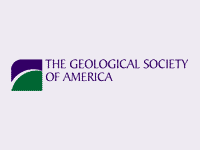Benefits And Implications Of Using Stereo Projection In Earth Science Classrooms
October 27th, 2002
Categories: Applications, Education

Authors
Kirkby, K., Morin, P., Finley, F., Brandt, J., Burdick, R., Nayak, A.About
Stereo projection systems bring a whole new dimension to Earth Science education. They can transform the way students learn many traditional earth science concepts, as well as allow them to explore new topics whose interpretation previously required a large amount of prior knowledge. Stereo projection allows students to view photographic images and computer visualizations as three-dimensional objects. They can interactively manipulate visualizations of global data sets, mathematical models of geological processes, three-dimensional geologic maps, time-dependent relationships or take virtual field trips to the rim of a Martian canyon or to climb the slope of a mid-ocean ridge.
The adoption of stereo visualization as a classroom tool is not without its consequences however. Stereo projection can fundamentally change the way that earth science concepts are taught. This means that it is not sufficient to merely build a stereo projection system, you have to revise course structures and materials to fully integrate stereo projection into the curriculum. The fact that stereo projection opens the course to entirely new concepts and materials also requires that we reexamine what we hope to teach. Which new concepts should be added and which materials traditionally used need to be modified or abandoned to make room in the course structure?
Not the least of these logistical and pedagogical issues is the dawning realization that technology has now brought science education to the same dilemma facing other fields. Educational technology is changing so rapidly that it threatens to outpace our ability to modify course structures to incorporate it, and more importantly our ability to assess its effectiveness. How do we effectively assess technology that evolves weekly, in an academic framework of quarters, semesters and years?
Resources
URL
Citation
Kirkby, K., Morin, P., Finley, F., Brandt, J., Burdick, R., Nayak, A., Benefits And Implications Of Using Stereo Projection In Earth Science Classrooms, The Geological Society Of America, 2002 Denver Annual Meeting, Denver, CO, pp. Paper #43077, October 27th, 2002. http://gsa.confex.com/gsa/2002AM/top/papers/viewonly.cgi?username=43077&